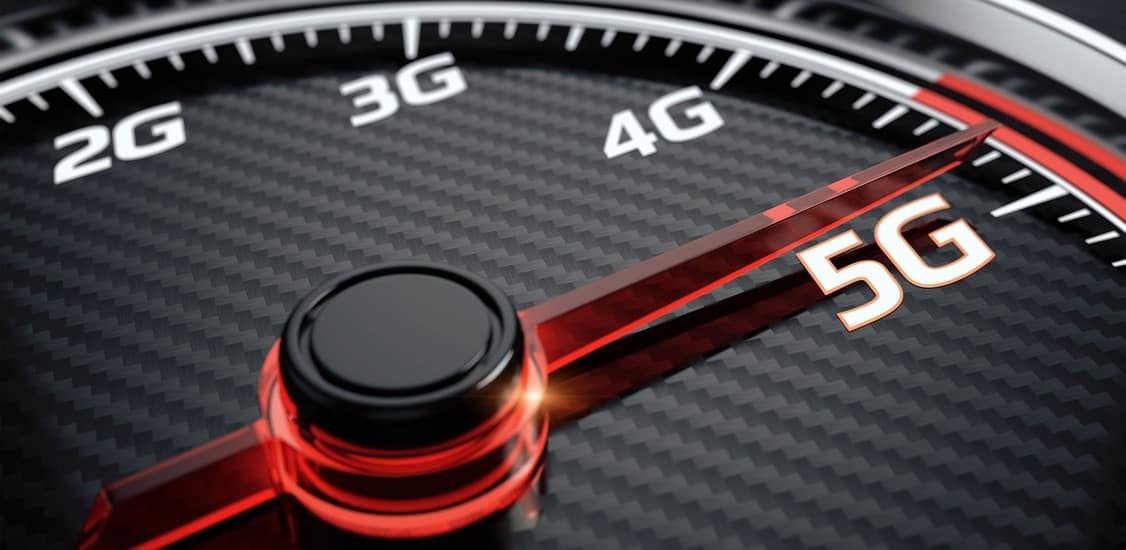The 5G-Ready mobile transport network is far more than just the collection of dumb pipes, albeit high-performance dumb pipes, that were required for 4G. Innovation is taking place at a rapid pace within the transport network today. Mobile and wholesale operators need to address evolving transport network requirements to make our 5G wishlists come true. This article will highlight how to leverage 4G infrastructure to ensure a 5G-ready network.
After years of debate, hype and excitement, most likely coupled with frustration and sleepless nights for many in the telecoms industry, 2018 looks to be the year that we’ll start to see “real” 5G networks. In fact, Elisa in Finland just launched, in June 2018, what they believe to be the world’s first commercial 5G service and in doing so, jumped ahead of the trials and planned 5G deployments from other operators. Of course with new standards, applications and technology options available to mobile operators, the definition of real 5G varies considerably. Even though projects are already underway to roll out 5G-based high-bandwidth residential services, many people consider real 5G to be a network based on the industry’s 5G New Radio (NR) standard, which means that any 5G NR device should be able to connect to the network and deliver mobility services in addition to high-speed residential services. Numerous operators across the globe have announced what they believe to be initial deployments and live trials of true 5G and these are scheduled to take place later in 2018, although Elisa took an early lead.
So with 5G becoming a reality, what is the impact on the transport network and what should operators consider as they build 5G-ready mobile transport networks? Let’s firstly look at the range of anticipated services that 5G will bring and the requirements these put on the underlying transport network. When you read the headlines on 5G it is almost like seeing a Christmas list from the future: the Internet of Things (IoT), talking machines, connected and self-driving cars, biometric drivers’ licenses and a laundry list of innovation for augmented and virtual reality. It’s also very likely that once we have the improved performance that 5G brings, innovators will create new services and applications that we have not envisaged yet. Key to providing these services is a radical change to the mobile transport network to support the new 5G radio access network (RAN) technology and supporting mobile core functions, enabling them to reach the bandwidth and delay/latency requirements as shown in figure 1.

Figure 1 - 5G Services with Bandwidth and Delay/Latency Specifications
4G already requires high-performance transport to support advanced functionalities such as coordinated multi-point (CoMP) and enhanced intercell interference coordination (eICIC). This requires key performance characteristics such as low latency, high network resilience, and in some geographic regions, high-quality synchronization performance to allow the transport network to deliver frequency, phase and time-of-day synchronization to the cell site. 5G brings a radical rearchitecting of the transport network to support the higher bandwidth, lower latency and tighter synchronization between cell towers required for the envisaged new services. Capacity increases by at least a factor of 10, and the complete network latency is lowered by a factor of 10, from 10 to 1 millisecond. This is achieved with a sharp focus on latency within the transport network and a migration of compute and storage resources previously located in the core of the network out into the network closer to the end user via mobile edge computing (MEC). These capabilities will also be virtualized software packages rather than the previous bespoke hardware platforms, which means the 5G network will be able to move virtualized capabilities around the network and dial up or down the associated processing power. To support this dynamic environment, mobile transport networks will need to migrate from today’s collection of effectively dumb pipes, albeit high-performance dumb pipes, to a dynamic network with tightly integrated control mechanisms to the wider 5G network.
Introducing X-Haul
Furthermore, today’s fronthaul and backhaul architecture will migrate to a new X-haul architecture, with Ethernet-based backhaul necessary to support the required higher performance for 5G, and fronthaul migrating from a Layer 1-based CPRI network to an Ethernet-like eCPRI network. eCPRI itself comes in high-split and low-split options to give fronthaul-like or backhaul-like performance to match the requirements of remote radio head (RRH) to distributed unit (DU) or DU to centralized unit (CU) traffic, as shown below.

Fronthaul and Backhaul Evolution For 5G
To achieve this, packet-optical-based mobile transport networks will be required to support Ethernet and eCPRI traffic over a combined any-haul/cross-haul/X-haul network, ensuring that each traffic type is supported within the specific performance parameter requirements. For those regions of the world where high-performance synchronization is delivered to the cell site via the transport network, particular attention must be paid.
4G features such as CoMP and eICIC already require tight synchronization performance of +/- 1.5 microseconds for phase synchronization which gives only a budget of 3 microseconds in total. The recently completed eCPRI specification reduces this to 65 or 130 nanoseconds for the highest 5G performance services, roughly a 30-fold improvement in synchronization performance for the network. Of course this highest level of synchronization performance is only really needed once operators are ready to implement the most demanding 5G RAN features, to support the most demanding 5G services such as those found in the top right segment of figure 1, and this is many years away. But 5G-ready mobile transport networks need to be ready for everything 5G RAN will throw at them, without the need for a future network upgrade to fix substandard synchronization performance. So true 5G-ready mobile transport networks need this high level of performance now. Having 5G-ready synchronization and low-latency performance now has been shown to also help improve existing 4G services, with network performance improvements at the handset level of 80% better download speeds, 40% better upload speeds and a 40% reduction in latency. This gives mobile operators an opportunity to fully capitalize on their existing 4G networks and spectrum licenses.
4G/5G Coexistence
The final factor we must consider is the migration from 4G to 5G itself. 4G doesn’t go away with 5G in the same way that previous generational changes did. When a cell site was converted from 2G to 3G or 3G to 4G the cell was totally upgraded, with the 2G, 3G and 4G networks largely operating as independent networks. 4G infrastructure, however, is a critical part of 5G. It adequately supports today’s levels of video streaming, internet browsing, etc., which means new 5G infrastructure can focus on supporting new high-performance services. Also, 5G cells will be drastically smaller than 4G cells due to the reach of millimeter wave technology, so it will take a very long time for 5G to reach the same coverage as 4G, if ever. If 4G cells are measured in kilometers, then 5G cells will be measured in hundreds of meters, as shown in Figure 3.

4G and 5G Cell Coverage
Mobile operators and wholesale operators who sell connectivity services to those mobile operators must consider transport equipment that enables them to roll out 4G fronthaul and backhaul today but that which also has the flexibility to migrate to the hybrid X-haul network of the future, supporting 5G X-haul concurrently with remaining 4G fronthaul and backhaul.
The good news for operators is that the optical transport vendor community is actively working to address these challenges and allow network operators to build the networks they need to support 4G now, with the flexibility and high performance to support 5G in the future. Advances in software-defined networking control will further enable these networks to provide the automated and dynamic nature required as 5G rolls out. Building a 5G-ready mobile transport infrastructure will enable these operators to focus their attention on the many other challenges associated with 5G with confidence that the transport network is ready to step up to the plate and deliver the performance required to support the new 5G services that the public is eagerly anticipating.


















